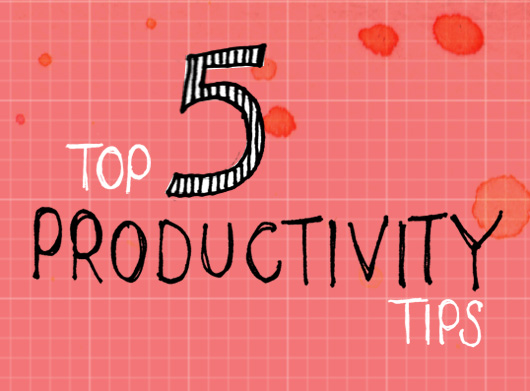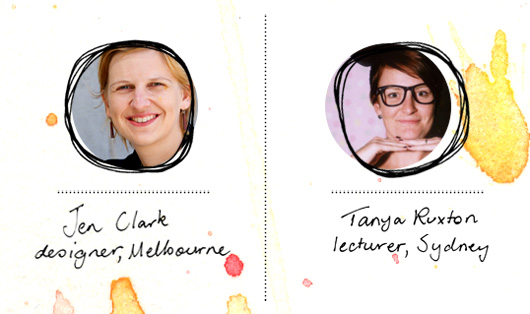Organise Me: Email Inbox-ification
The average business user spends more than two hours a day dealing with email. That's an average of 48 to 75 emails per day (some are even receiving a whole lot more). Source
No more email Inbox-ification it's time to cut your email traffic, tidy up your inbox and deal with your email in a more efficient and streamlined manner. This week try allocating some time to review your email processes, review your email clients capabilities and also review your email brand (address name and signature).
No matter what email client you are using, at the bare minimum you should be able to label, filter and store emails which will ultimately lead to a happier inbox (when put into practise). Recently I discussed with a few freelancers which platform they prefer to use for email and Gmail has repeatedly come up as the webmail server of choice. It seems that there is a lot of Gmail love in the air as it does label, filter, store and search emails extremely well. You can also use your email through Google Apps which allows you to look professional with a you@yourcompany.com email address.
Note: As your business grows it is definitely time to again reassess your email needs and possibly move away from webmail servers, do you need to think about hosting your own emails in-house with systems such as Kerio a very secure option, or using a third-party email-hosting provider which would probably be hosted alongside your website.
It’s vital to have your email backed up in multiple locations so when a server goes down you don't lose your information life line and you can still continue to operate. I never really understood IMAP and POP forwarding but setting up IMAP is an essential part of email. IMAP is described as "what allows you to download messages from servers onto your computer so you can access your mail with a program like Microsoft Outlook or Mac Mail, even when you aren't connected to the Internet." IMAP also provides a better method to access your mail from multiple devices. You can check your email at work, on your mobile, at home and new mail is accessible from any device at any time. If using Gmail there is a lot of support to use IMAP and using both an email client on your desktop and the Gmail webmail server takes the scariness out of backup. See Gmail IMAP help.
Previously I thought that I had my email system nailed by moving emails into folders. However, because I am a folder addict, in the past my emails were just getting lost among the many, many folders that I had created (utilising Search was the only way to effectively find emails). A suggestion would be to create a main category to which you add sub folders if needed, I must say this is working a lot better for me. Also don't forget you can you simply use Gmails coloured labels or use the Archive filter as an option rather than folders. I still prefer to leave emails that need actioning in my email Inbox and the ones which I have actioned move them into a folder out of sight but not out of reach. Similar to the 4D model: 1. Delete it, 2. Do it, 3. Delegate it or 4. Defer it.
Aim for a Zero Inbox by setting up new filters and sorting your email out. You can organise emails from certain senders (or on certain topics) to automatically be tagged with a coloured label or filtered to a folder simply by choosing "Filter messages like this" from the "More" drop-down menu. Also many email clients (including Gmail) will allow you to append your address name and filter the new name with an automatic label or folder. Any emails from a subscription might be given the new email address subscription@andyjane.com or an amended email address of hello+subscription@andyjane.com. See more information on: Labels, Filters and Appending email addresses.
A few extra tips for the road:
- Utilise the tools that come with Gmail such as keyboard shortcuts to help save you time and Labs which are experimental features and will get you using your email just the way you like it. See more information on: Shortcuts, Labs.
- Don't forget to setup your Junk email use filters to catch the nasties and get them out of your email life.
- Declutter regularly and only keep what you need.
Lastly my number one tip is to limit email checking (if you aren't expecting an urgent email). In terms of productivity we lose valuable time constantly checking our emails. It has even been recorded that we lose as much as 15 minutes every time we move from one project to another. In order to eliminate this time waster limit yourself to two/three email checks a day, morning, noon and 4pm, at these times schedule uninterrupted time to process and organise your email. Oh and don't forget to turn your email notification sounds off.
What are your top tips for managing email. Tell us by adding your comment below.
Andrea McArthur has a passion for all things visual and a soft spot for organisation. Type is her true love and goes weak at the knees over beautiful design. Andrea works as a freelance graphic designer in Brisbane by day and lectures in graphic design by night. You will find her sharing design related goodness via @andyjane_mc www.andyjane.com
Organise Me: Top 5 Productivity Tips
Productivity - noun 1. The state or quality of producing something. 2. The effectiveness of productive effort, as measured in terms of the rate of output per unit of input.
Like most creatives you are probably so busy that time passes you by and you wonder where all of your time went. Or you may find yourself constantly sacrificing your personal life in order to stay on top of your work commitments. At the same time you are probably questioning how others manage to stay productive, and why it looks so easy to those organised folk.
It turns out that setting goals, effective time management and discipline are key to giving yourself more quality time. Recently, I broke the silence and asked two busy creatives (who are as equally organised as they are busy) what their secret is to being and staying productive in their professional lives.
Meet the creatives: Jen Clark, Melbourne A design director and owner of Melbourne design studio Jen Clark Design, Jen Clark has over 15 years experience in all aspects of graphic design, specialising in branding and web design for new and existing businesses. @JenClarkDesign www.jenclarkdesign.com.au
Tanya Ruxton, Sydney A creative type with over 12yrs experience, working as the Head of Teaching, Shillington College, Australia. With a love for organisation, Tanya has run many creative side projects in her spare time, as well as her own graphic design business. @wearemessengers http://wearemessengers.com
Several tips reappeared in Jen and Tanya's answers - these tips appear to be the most universally recognised and most commonly adopted between organised folk. Following are their combined all time top 5 tips for productivity.
1. To-do Lists Manage tasks by keeping and writing lists. Andy's tip: Complete basic tasks as they arise. Jen's tip: The best time to make a list is often when you have the least time to write one. Tan's tip: Write a new list every day or every second day to keep on track.
2. Schedule blocks of time Plan your day in "blocks" (much like Hugh Grant in "About a Boy"). Plan ahead whenever possible by mapping out project deadlines for the following weeks or months ahead. Andy's tip: Keep an up to date calendar. Jen's tip: Set mini-deadlines throughout the day. Tan's tip: Be committed and don't get distracted.
3. Working space Create a comfortable working environment that you enjoy being in and that inspires you. This includes getting dressed as if you were heading to the office if you work from home. Andy's tip: Ergonomics work. Jen's tip: Your space influences your work, it can invoke feelings of vitality, energy and motivation. Tan's tip: Be comfortable, invest in a good chair. Declutter - tidy desk, tidy day.
4. Be realistic Secretly thinking we are Superwoman and can do it all doesn't always work. When opportunities arise communicate your current commitments and capabilities to clients. This will ensure you are not overbooking yourself or feeling overstretched or compromised on time. Andy's tip: You can not always say yes. Jen's tip: Be honest. Tan's tip: Don't over promise. Get a freelancer to help out.
5. Take breaks: When you work solo it can be very easy to work right through the day and night. However by establishing a routine and taking breaks you'll be less likely to procrastinate and find you are more reinvigorated to continue. Seriously taking a break can refresh your mind, your soul and your eyes. Andy's tip: Routine - 10am coffee, 12.30 lunch, 3pm stretch. Jen's tip: Time away from the desk is important. Don't get caught up in the lure of the immediate. Tan's tip: Enjoy your lunch break.
A big thankyou to Jen and Tanya for their sharing their top productivity tips (there are more to come). Now that we have demystified some of those efficient working habits we are a step closer to becoming one of those elusive, productive, organised folk.
Andrea McArthur has a passion for all things visual and a soft spot for organisation. Type is her true love and goes weak at the knees over beautiful design. Andrea works as a freelance graphic designer in Brisbane by day and lectures in graphic design by night. You will find her sharing design related goodness via @andyjane_mc



